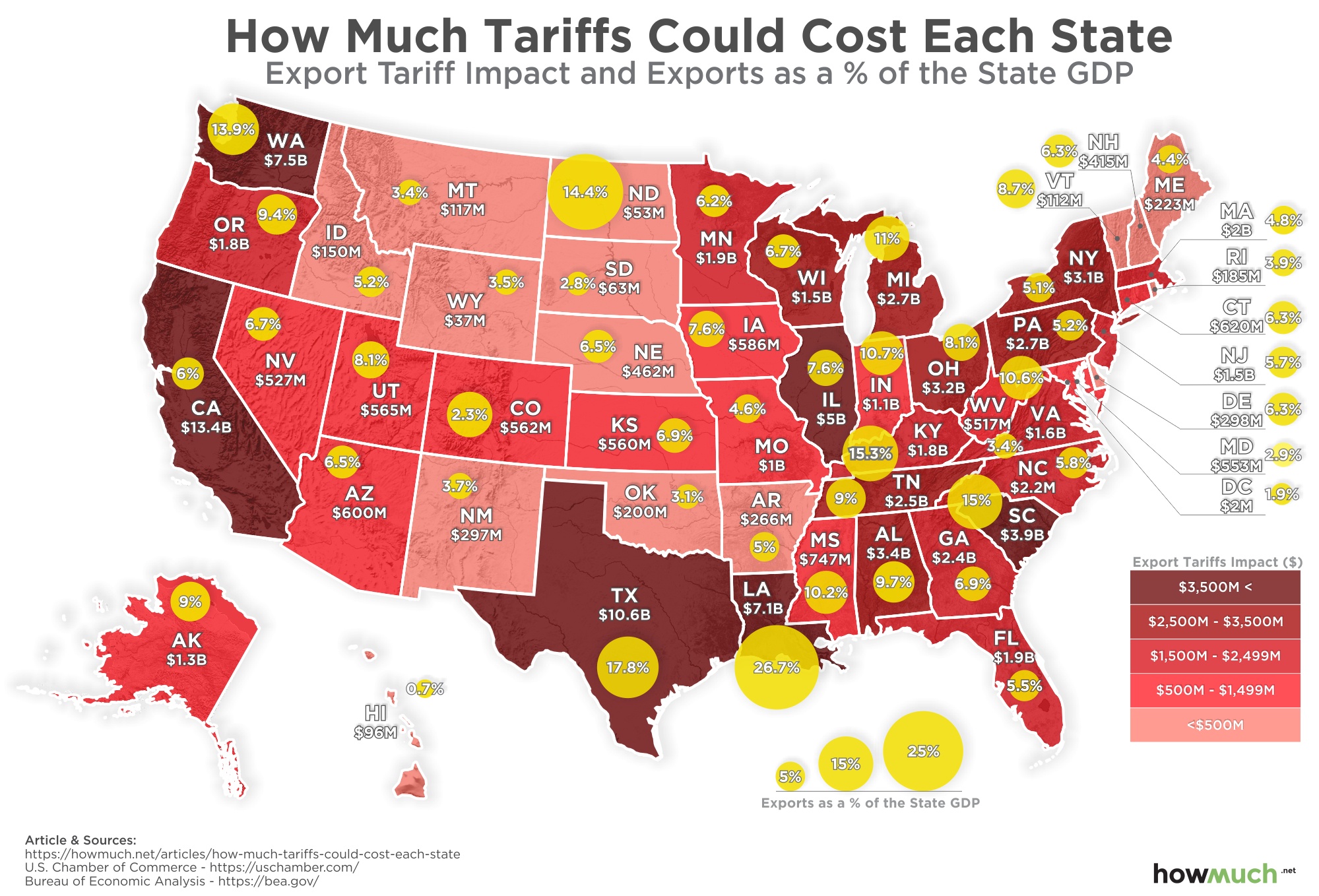Southeast Asia Solar Exports Face New US Tariffs: Industry Implications

Table of Contents
Impact on Southeast Asian Solar Manufacturers
The new US tariffs represent a considerable blow to Southeast Asian solar manufacturers.
Decreased Profit Margins
The tariffs directly translate to reduced profitability. Manufacturers are forced into a difficult position: absorb the added costs and reduce their profit margins, or pass them on to consumers, potentially reducing competitiveness in the global market.
- Vietnam, Malaysia, and Thailand, major solar panel exporters, are significantly impacted.
- Potential job losses in manufacturing and related industries are a serious concern.
- Reduced competitiveness threatens the long-term viability of some companies.
Shifting Market Dynamics
To mitigate the impact of the US tariffs, Southeast Asian manufacturers are actively seeking alternative export markets.
- The European Union, India, and Japan are potential new target markets, offering significant growth opportunities.
- However, diversifying export markets presents challenges: navigating complex logistics, varying regulations, and fluctuating demand in new regions.
- Establishing new distribution networks and building strong relationships with importers in these alternative markets will be crucial.
Investment Implications
The uncertainty created by the tariffs is impacting foreign direct investment (FDI) in the Southeast Asian solar industry.
- Investor confidence has decreased, leading to potential delays or cancellations of planned solar energy projects.
- Future expansion plans are being reassessed, impacting the overall growth trajectory of the sector.
- Reduced FDI hinders the industry's ability to invest in research and development, crucial for long-term competitiveness.
Effects on the Global Solar Energy Market
The repercussions of the US tariffs extend far beyond Southeast Asia, impacting the entire global solar energy market.
Increased Solar Panel Prices
The tariffs contribute to a general increase in global solar panel prices.
- Estimates suggest a price increase ranging from 5% to 15%, significantly impacting the affordability of solar energy projects.
- Higher prices can hinder the development of new solar energy projects, potentially slowing down the global transition to renewable energy.
- Meeting ambitious renewable energy targets set by many countries may become more challenging.
Supply Chain Disruptions
The tariffs create significant disruptions within the global solar supply chain.
- Production bottlenecks and shipping delays are becoming more frequent.
- Increased transportation costs further exacerbate the price increases.
- Potential shortages of solar panels are a growing concern, impacting project timelines and overall market stability.
Geopolitical Implications
The tariffs have wider geopolitical implications, fueling trade tensions and impacting international relations.
- Potential for retaliatory tariffs from affected Southeast Asian countries cannot be ruled out.
- Strained US-Southeast Asia relations could impact future trade agreements and collaborations.
- The incident highlights the complexities of global trade and the need for more balanced and predictable trade policies.
Strategies for Mitigation and Adaptation
Southeast Asian solar manufacturers and governments need to adopt proactive strategies to mitigate the impact of the tariffs.
Diversification of Export Markets
Reducing reliance on a single market is crucial for long-term sustainability.
- Thorough market research to identify promising alternative markets is essential.
- Building strong partnerships with importers and distributors in new regions is vital.
- Exploring new technologies and product diversification can open up new market opportunities.
Technological Innovation
Investing in research and development is key to improving efficiency and reducing costs.
- Increased investment in R&D will lead to more cost-effective solar technologies.
- Focusing on domestic market growth can reduce dependence on volatile export markets.
- Developing innovative technologies to improve efficiency and reduce manufacturing costs is crucial.
Policy Responses
Government policies and support are vital in helping the industry adapt.
- Financial incentives and subsidies can help manufacturers navigate the challenges.
- Active participation in trade negotiations to secure fairer trade agreements is crucial.
- Government support for diversification efforts, including market research and development of new partnerships, is paramount.
Conclusion
The US tariffs on solar panels represent a significant challenge to Southeast Asia solar exports, impacting profitability, market dynamics, and the global solar energy market. The increased prices, supply chain disruptions, and geopolitical implications necessitate proactive adaptation strategies. Decreased profits, shifts in export markets, supply chain fragility, and the urgent need for diversification are key takeaways. Understanding the implications of these Southeast Asia solar exports tariffs is crucial for navigating the future of renewable energy. Stay updated on industry news and advocate for policies that promote fair trade and the global adoption of solar energy.

Featured Posts
-
 Dwytshh Bnk Yezz Wjwdh Fy Alimarat Astratyjyt Jdydt Wfrs Nmw
May 30, 2025
Dwytshh Bnk Yezz Wjwdh Fy Alimarat Astratyjyt Jdydt Wfrs Nmw
May 30, 2025 -
 Barry Diller Claims Popeyes Robin Williams Set Was Severely Cocaine Influenced
May 30, 2025
Barry Diller Claims Popeyes Robin Williams Set Was Severely Cocaine Influenced
May 30, 2025 -
 Deutsche Banks Head Of Distressed Sales Departs For Morgan Stanley
May 30, 2025
Deutsche Banks Head Of Distressed Sales Departs For Morgan Stanley
May 30, 2025 -
 The Taco Trade Dispute Understanding Trumps Anger
May 30, 2025
The Taco Trade Dispute Understanding Trumps Anger
May 30, 2025 -
 Nvidia Ceo Jensen Huangs Warning Chinas Ai Rivals Are Formidable
May 30, 2025
Nvidia Ceo Jensen Huangs Warning Chinas Ai Rivals Are Formidable
May 30, 2025
